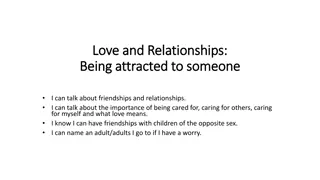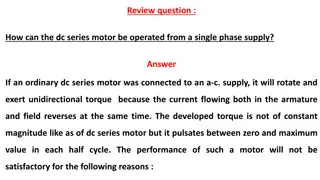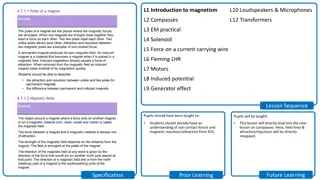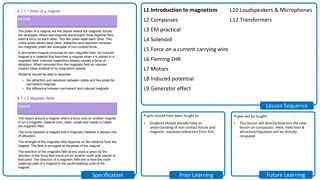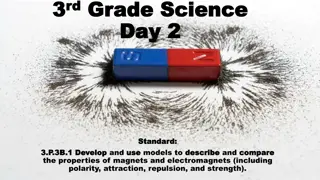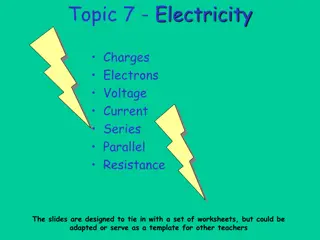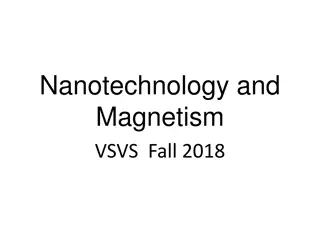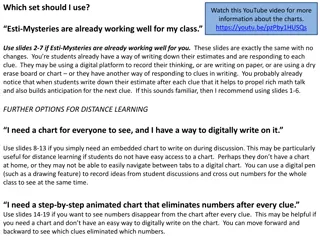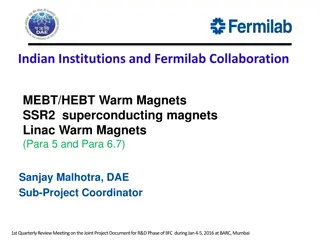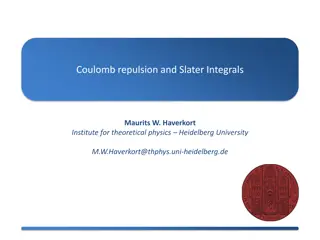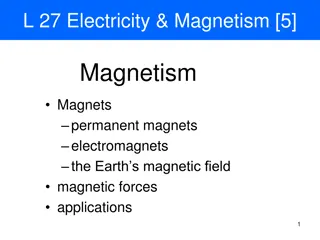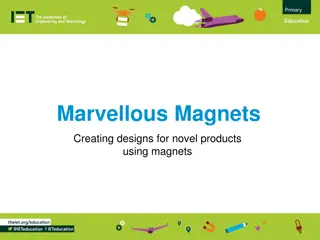Understanding Magnets: Properties, Attraction, and Repulsion
Explore the fascinating world of magnets through a series of True or False questions, visual aids, and practical examples. Learn about magnetic materials, the Earth's magnetic field, and the behavior of magnets when interacting with different objects. Test your knowledge with fun activities and enhance your understanding of magnetism and its principles.
Download Presentation

Please find below an Image/Link to download the presentation.
The content on the website is provided AS IS for your information and personal use only. It may not be sold, licensed, or shared on other websites without obtaining consent from the author. Download presentation by click this link. If you encounter any issues during the download, it is possible that the publisher has removed the file from their server.
E N D
Presentation Transcript
Monday 4thJanuary 2021 Magnets Starter: True or False? 1 All metals are magnetic. 2 All magnets have a north and south pole. 3 The earth has its own magnetic field. 4 Like poles attract. 1. Opposite poles attract. 5 1. The earth has a magnetic core. 6 Extension Question: What else do you know about magnets?
Starter: True or False? 1 false All metals are magnetic. All magnets have a north and south pole. 2 true 3 The earth has its own magnetic field. true 4 Like poles attract. false 1. Opposite poles attract. 5 true 1. The earth has a magnetic core. 6 true
Watch the video and attempt the questions below: What happens to a metal object that enters the magnetic field of a magnet? What happens to a wooden object that enters the magnetic field of a magnet? Name 3 magnetic objects and 3 non-magnetic objects What is meant by the term magnetic object ?
Most materials are not magnetic, but some are. A magnetic material can be magnetized (made into a magnet) or will be attracted to a magnet. These metals are magnetic: Iron Cobalt Nickel Steel is mostly iron, so steel is magnetic too. Here are some examples of magnetic objects:
Magnetism is an invisible non-contact force (which means the objects dont need to touch for the force to work). All magnets have a north (N) and a south (S) pole. Like poles repel. This means that the two poles will push away from each other. Opposite poles attract. This means that the invisible magnetic force between the magnets will pull the poles together.
Will these magnets attract (pull together) or repel (push apart)? Draw diagrams 1-3 and state whether the magnets would attract or repel. 1. 2. 3.
Will these magnets attract (pull together) or repel (push apart)? 1. Repel 2. Repel 3. Attract Attract
Check your knowledge of magnets. Use the keywords to help you fill in the blanks. Keywords repel cobalt attracted away north south magnetic force opposite Magnets have two poles. One end of a magnet is called the pole and the other end of a magnet is called the pole. poles attract. This means that the between the magnets will force the poles together. invisible Like poles will push . This means that the two poles from each other. Magnets are out of metals that are magnetic such as iron, nickel and . to objects that are made
Mark your answers, correct any mistakes. Keywords repel cobalt attracted away north south magnetic force opposite Magnets have two poles. One end of a magnet is called the pole and the other end of a magnet is called the south north pole. poles attract. This means that the between the magnets will force the poles together. Opposite invisible magnetic force Like poles will push . This means that the two poles from each other. repel away Magnets are out of metals that are magnetic such as iron, nickel and . to objects that are made attracted cobalt
State 3 magnetic materials and 3 non-magnetic materials. True or false? Like poles attract and opposite poles repel. Complete the sentence: Magnets have two poles. These are







